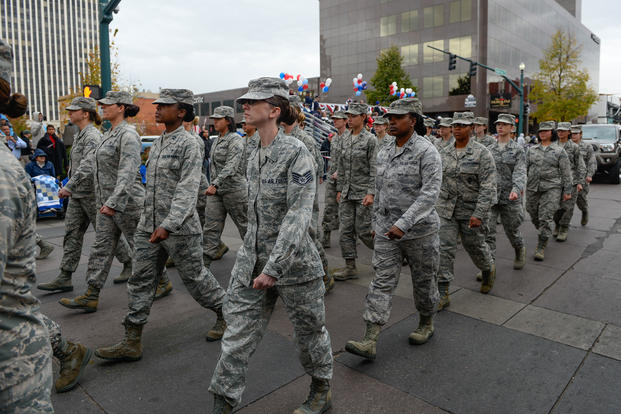Joy Ilem, a service-connected disabled veteran of the U.S. Army, is the national legislative director for Disabled American Veterans.
Last month, a Department of Veterans Affairs Inspector General report revealed that roughly 1,300 claims for military sexual trauma were incorrectly processed and denied, leaving veterans suffering from PTSD without the benefits they deserve.
The VA has stated it will take the necessary steps -- including thorough reviews and additional training -- to rectify the situation regarding military sexual trauma claims. But these findings, disproportionately affecting women veterans, are symptoms of a larger cultural problem.
The DAV (Disabled American Veterans) is hopeful these reports will provide an opportunity for newly confirmed VA Secretary Robert Wilkie to make dramatic improvements in the department's efforts to address the needs of women veterans. Wilkie, who received bipartisan praise for his work at the Defense Department to improve sexual-assault prevention efforts, could prove to be the right person at the right time to finally make the changes needed to usher in a culture that shows women their military service is valued and respected.
As noted in the DAV's new report, Women Veterans: The Journey Ahead, released today, women are the fastest-growing subpopulation of the military and veteran communities, representing more than 15 percent of active-duty military and 10 percent of veterans, but many still face significant barriers accessing VA services and benefits. Despite earnest efforts to improve the situation in recent years, longstanding administrative, budgetary and leadership shortcomings at the VA have hampered the department's ability to consistently meet the needs of women veterans at all VA access points.
Here are just a few stories that illustrate the challenges many women veterans still encounter:
- Shealynn Casserly, who spent four years recovering at Walter Reed after an IED blast in Afghanistan, was repeatedly asked if she had sustained her injuries from a fall. No one assumed she was a combat veteran.
- Sen. Tammy Duckworth, who became a double amputee when the helicopter she was piloting was shot down in Iraq, was told by her local VA it did not have authority to offer fertility services when her injuries prevented her from naturally conceiving a child.
- Brenda Reed was outfitted with a man's oversized prosthetic foot following her amputation. When she requested a better fit, the VA prosthetist simply shaved off the heel and toes of her existing prosthesis.
Significant changes and measurable progress have been achieved since publication of our previous report on women veterans in 2014. In fact, 22 of its 27 recommendations to improve federal programs and services for women veterans have been implemented, in whole or in part. But we have more to do, and Women Veterans: The Journey Ahead outlines 45 new recommendations as a roadmap forward.
Many people are not aware that clinical studies have consistently shown that the VA -- when properly funded and staffed -- achieves far better health outcomes for women veterans than the private sector. In fact, the extensive research the VA has conducted over the past decade makes it uniquely suited to serve this group.
Most women veterans using the VA have complex health care needs, many requiring its specialized services for mental health conditions related to sexual and combat trauma, prosthetics and substance use disorders. Women veterans are also at greater risk of suicide and homelessness than their non-veteran peers. With such complex needs and challenges, women veterans benefit greatly from the VA's holistic and integrated approach to care, benefits and services.
It's critical to remember that women aren't just small men. Women's body proportions and hormonal makeup are different. The roles they play in society and with their families are not the same either. Women experience military service differently than men and have different post-deployment challenges and distinct health care needs. They also rightly expect VA health providers and benefit representatives to have expertise in women's health and to be knowledgeable about their military service.
How the VA provides care, handles claims and structures its programs and services sends a direct message about how women's military service is valued. Unfortunately, the culture created by past actions and policies has left room for improvement.
Moving forward, we can't just tell women they belong in our military and veteran communities; we need to show them.
-- The opinions expressed in this op-ed are those of the author and do not necessarily reflect the views of Military.com. If you would like to submit your own commentary, please send your article to opinions@military.com for consideration.















